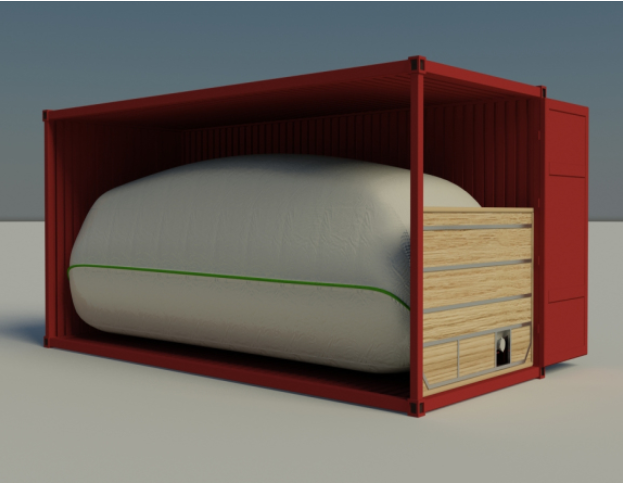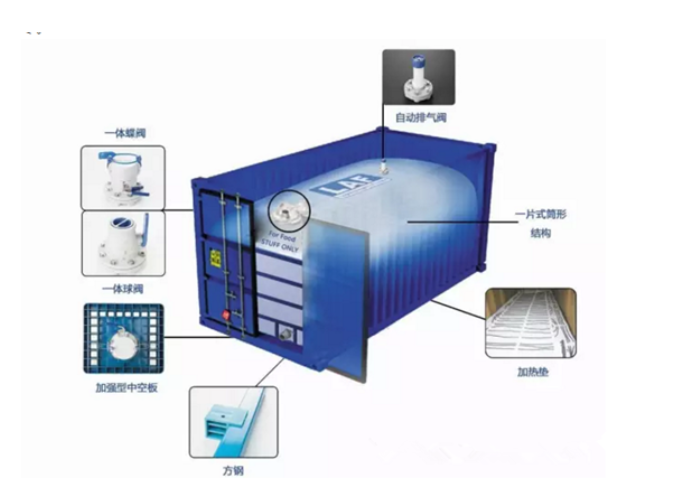What is a flexitank
Flexitank container is a new type of flexible packaging container that can store and transport various non-dangerous liquid goods. It directly transforms a 20-foot standard container into a container that can directly transport liquid goods. It has the characteristics of elasticity, softness, lubrication, light weight and easy degradation. It has passed the test of high pressure and high load. It is suitable for shipping liquid non-risk goods, with large loading capacity and simple operation. It is a good solution for the transportation of bulk liquid goods. Each container can be placed exactly in a 20-foot container with a volume of 14-24 cubic meters and can store and transport 24,000 liters of liquid. It can replace expensive traditional packaging such as tanks and iron drums in the transportation of non-hazardous liquids. The transportation volume can reach 24,000 liters, which is about 35% higher than that of barreled. It can prevent cross-contamination of goods and greatly reduce the cost of loading and unloading, packaging and material management. It meets the requirements of environmental protection and food packaging, and is suitable for transportation such as sea, railway, and land transportation. Due to its economic advantages compared with traditional transportation packaging methods, it is widely used in various chemical, petroleum, food, feed, agricultural products and other fields.

The structure of the container flexitank
Liquid bags are composed of multiple layers of polyethylene and polypropylene. The inner layer is loaded with goods and gradually reduces the pressure of the outer layer. The outer layer provides anti-collision and static and dynamic pressure performance for the inner layer structure to ensure the stability of the goods.

Application scope of container flexitank
Food: wine, edible oil, various concentrated fruit juices, food additives, sorbitol, palm oil, soy sauce, rice wine, mineral water, malt extract, various syrups, etc.
Various types of grease: lubricating oil, lubricating oil additives, transformer oil, white oil, tung oil, coconut oil, hydraulic oil, industrial gear oil, castor oil, high oleic fatty acid, oleic acid, etc.
Chemicals: plasticizers, synthetic resins, detergents, polyols, feed additives, brine solutions, propylene glycol, ethylene glycol, polyethers, alkylating agents, herbicides, fertilizers, rubber, etc.

Tel.: +86 17864390557





